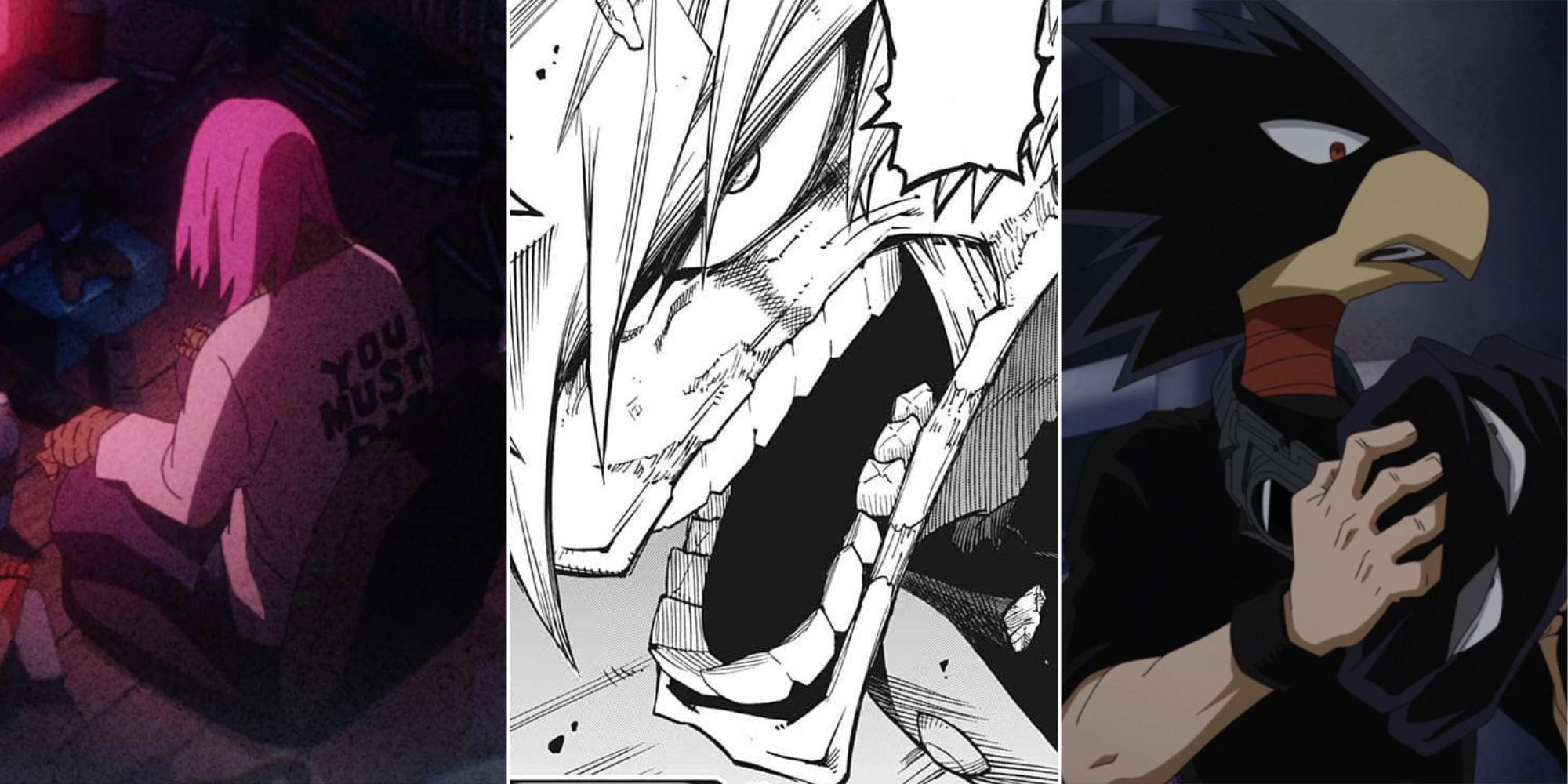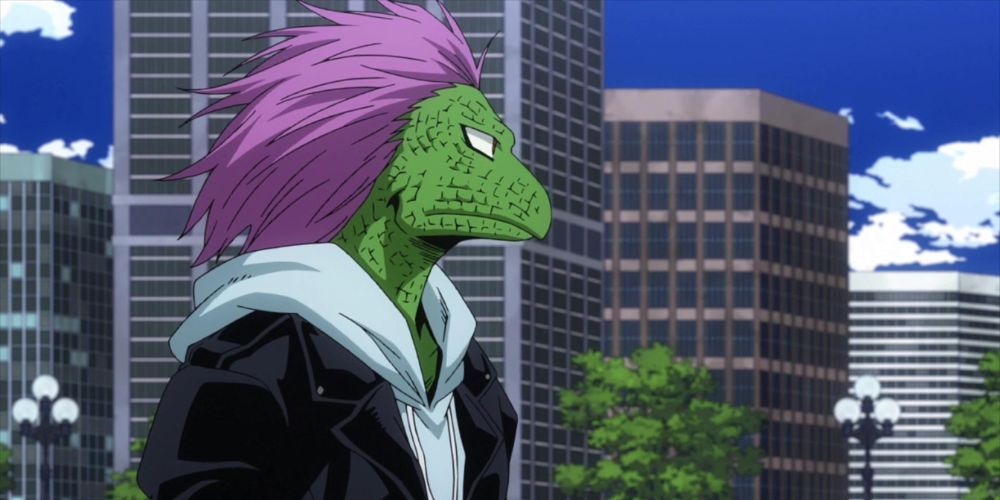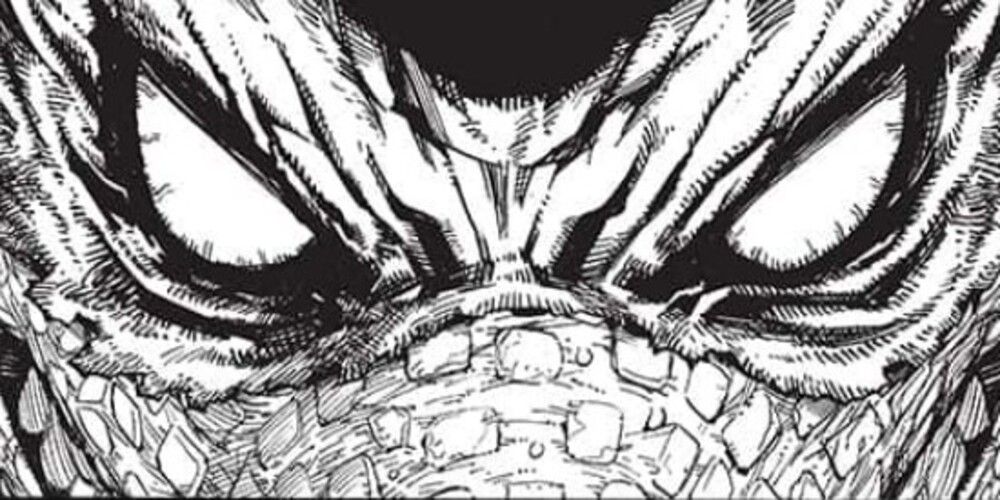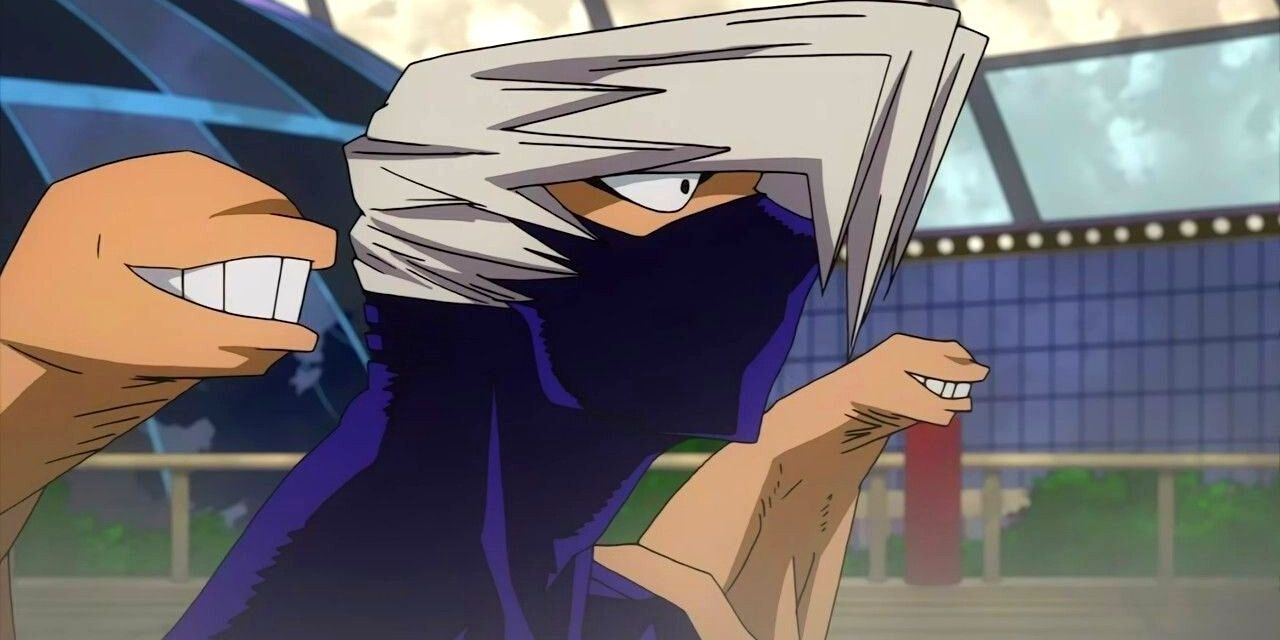The complex world of heroes and villains that Kohei Horikoshi sets up in My Hero Academia is a compelling one. It takes the worlds of Marvel and DC comics, and spreads the distribution of superpowers to 80% of society. This means that rather than existing within society, superpowers have become society itself.
This of course brings up a lot of societal issues that the series uses to flesh out its worldbuilding, and develop its characters. For example, characters like Shinso and Bakugo have their formative years fundamentally affected by the way their society views their quirks, and their views on heroism and themselves are changed as a result. However, not all of the series’ quirk subplots get this amount of love.
The Plight of The Heteromorphs
MHA’s quirks fall into a few rough categories, which describe how the quirk generally functions. For example, ‘emitter’ type quirks like those of Enji and Shoto Todoroki work by releasing something from the body. Heteromorphic/mutant quirks on the other hand, are quirks that fundamentally change the user’s physical appearance, whether slightly or extremely. Mashirao Ojiro for example, has a large tail growing from his body, which is a rather small change from a normal looking human. Someone like Cementoss or Ectoplasm however, look completely inhuman.
Even Eraser Head’s quirk ‘erasure’ cannot remove these physical mutations when canceling out the quirk. This means any heteromorphic quirk users are stuck looking how they look forever. This ends up being an issue especially for those whose faces are more inhuman.
As one might expect, having people in society who look so different from everyone else opens the door for discrimination. It is explained on several occassions, that heteromorphs face some level of discrimination in MHA’s hero society. Most prominently, the villain Spinner describes being ostracized for his lizard-like appearance, but there are a few other hints in the way these people are referred to by others.
The Pervasiveness of the Issue
This issue hasn’t been deeply explained yet, but there are a few things that are known for sure. For one, there are hate groups akin to the KKK who focus their hatred on heteromorphs. Particularly, the ‘creature rejection clan’ are a group who holds cult-like meetings, complete with creepy mansions and matching costumes. Their stated purpose is the eradication of the heteromorphs from society, as they view them as less than human.
Supposedly the CRC was once more relevant in society, but lost influence due to their extremism and violent tactics. As of now, they seem to have been reduced to small cells, one of which was slaughtered by the league of villains in a scene that didn’t appear in the anime.
A recent manga chapter has implied that discrimination is mostly an issue in the countryside, and that heteromorphs like class 1-A’s Koda who grow up in cities might not experience any explicit discrimination in their lifetimes.
However, there are enough people who do experience this in some part of their life, that by the final battle, All For One has managed to gather several thousand heteromorphs for a small army being led by Spinner. Many of those in this army seem incenced enough with the discrimination against them that they’re willing to aid in the destruction of society, and view any heteromorphs not on their side as traitors.
How It's Underused
It should be said that the fact that MHA has so many subplots that could easily be expanded on more is a credit to its world-building. Even besides heteromorphic discrimination, other issues like quirk marriages, quirk counseling etc. are only given brief mentions, but their existence shows that Horikoshi has given thought to the many ways in which the pervasiveness of superpowers would affect human society.
However, this subplot ends up existing in a sore range between forget-ability and proper exploration. Unlike some other subplots, this one is presented as vital to the main conflict. Spinner especially, is a character who has increasingly been connected to this, as the emerging leader of a mutant uprising. It’s his presence among the villains that attracts many other heteromorphs to All For One’s army. In a recent manga chapter, he and his followers have begun to receive the limelight, but it feels somewhat late in the game to put the focus on them. There just hasn’t really been enough development to get readers invested.
The main cast has several heteromorphs in it, so one might think the issue would come up more often. Even if the big cities don’t have as much discrimination, the students do travel during the series, and in more rural areas could’ve been shown to deal with some minor discrimination. As someone who comes from a more discriminatory town, Shoji in a more major role could have also spoken on these issues. It also doesn’t help that heteromorphic characters like Shoji, Koda and Tokoyami have been largely ignored by the plot.
As it is, this subplot just lacks the detail to provide a compelling analysis on discrimiantion. Its existence does add to the complexity of My Hero Academia’s world, and it seems to be primed to get more focus in upcoming chapters. However, it’s been so largely absent from the series as a whole, that it’s hard to imagine it will be able to make up for all that lost time.




